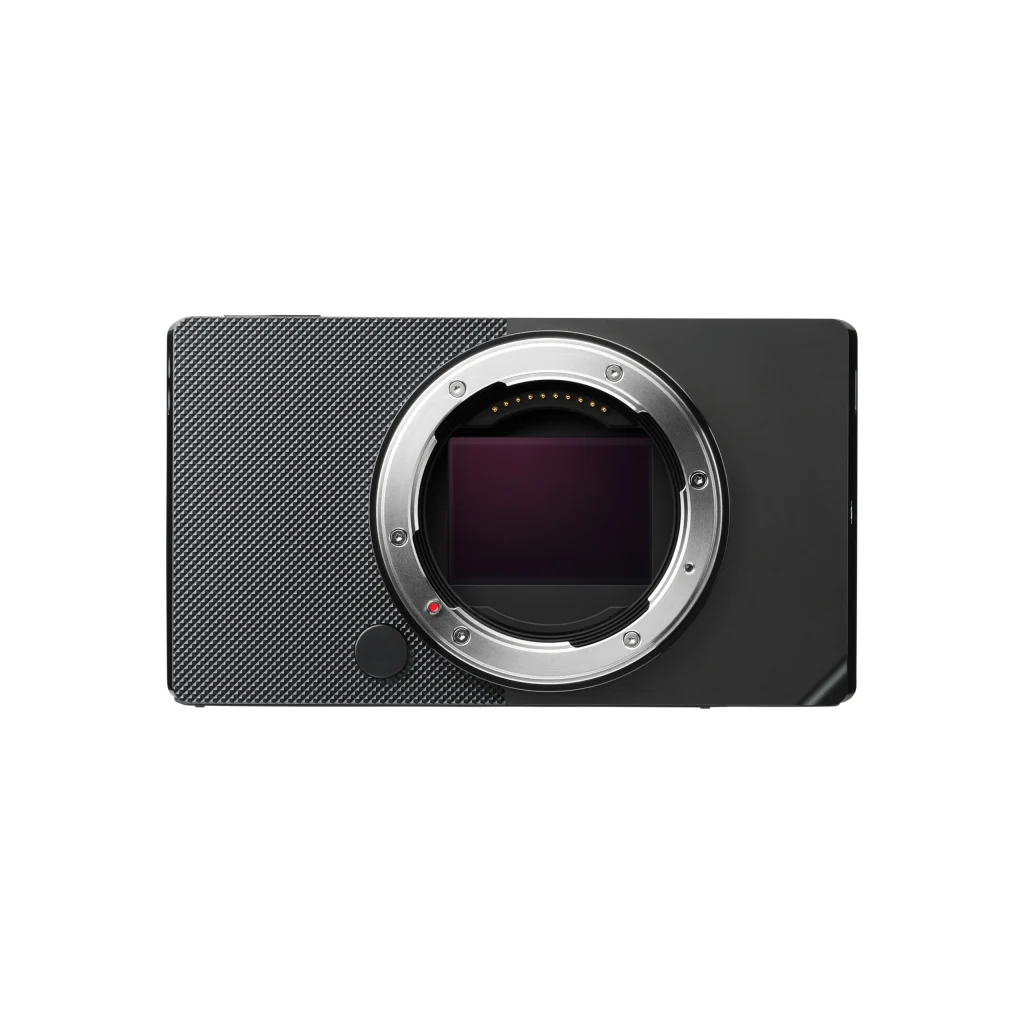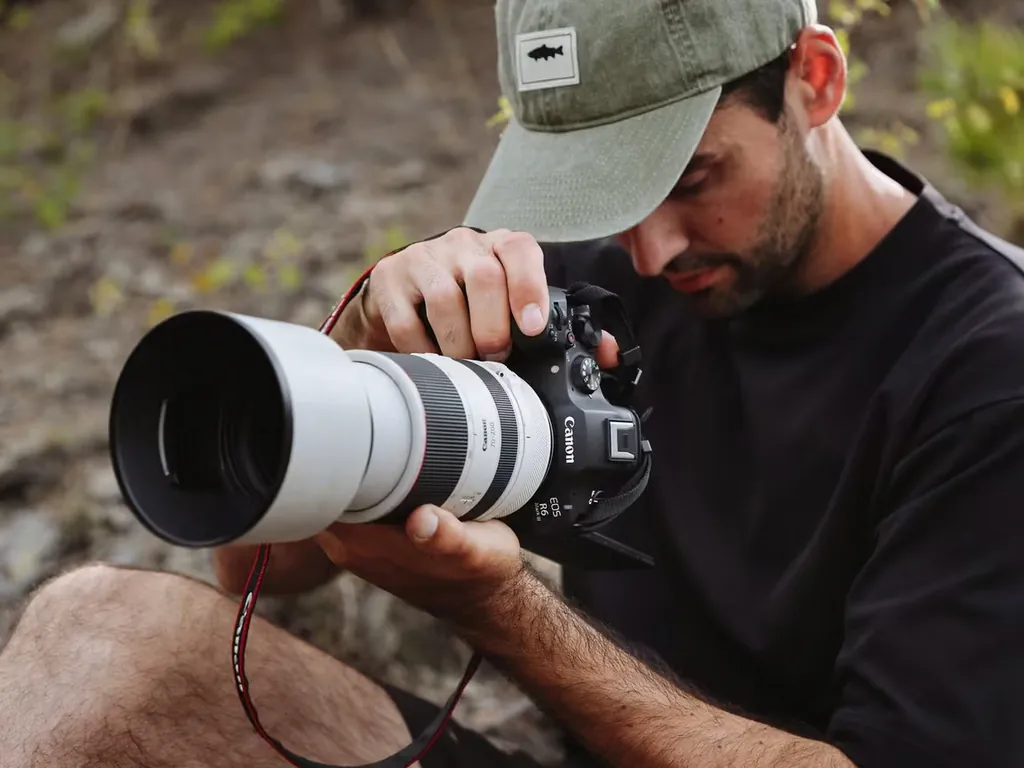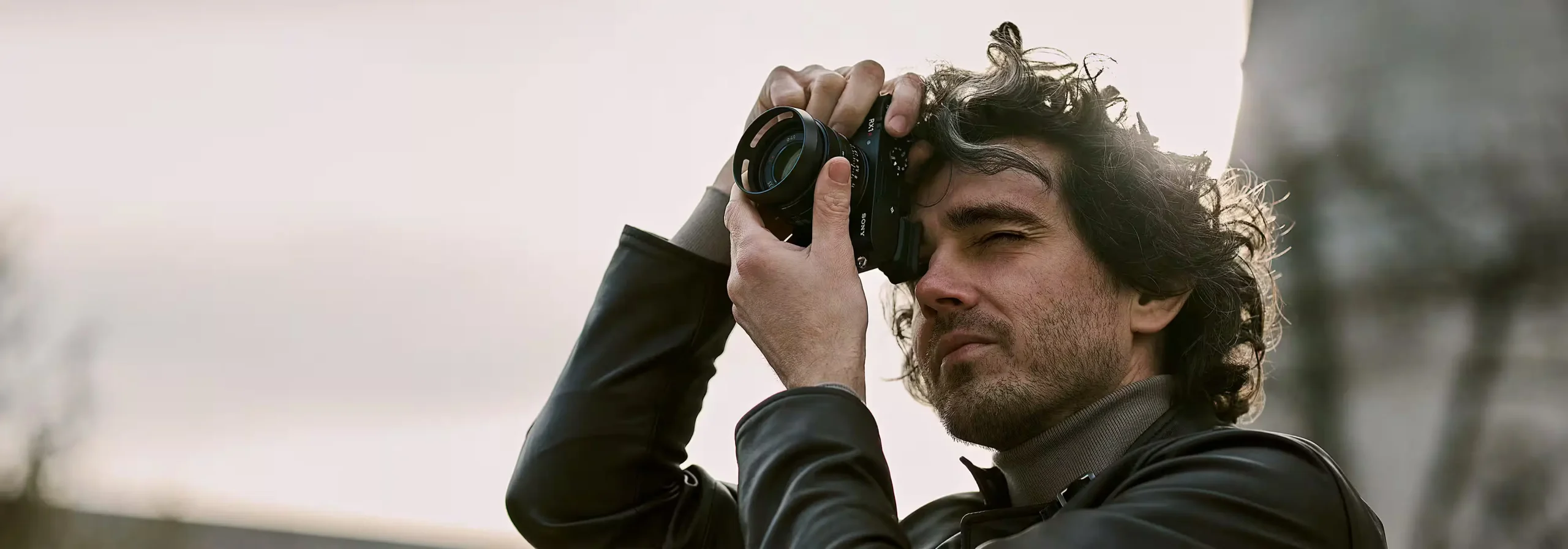Radical Simplicity Meets Full-Frame Excellence
In a world where digital cameras continuously add more buttons, dials, menus, and features, Sigma has taken a dramatically different approach with the BF. This revolutionary full-frame mirrorless camera strips photography back to its essence through a radically minimalist design that prioritizes the fundamental experience of image-making. After extensive hands-on time with this unique camera across various shooting scenarios, we’re ready to share our thoughts on whether this bold experiment in simplicity delivers a compelling photographic tool or if it sacrifices too much in pursuit of minimalism.
Key Specifications
- Sensor: 35mm full-frame (35.9 × 23.9mm) back-illuminated CMOS sensor
- Resolution: Approximately 24.6 megapixels effective
- ISO Range: 100-102400 (expandable to ISO 6-50)
- Autofocus: Hybrid phase detection + contrast detection system
- Storage: 230GB internal memory
- Video: 6K (6016 × 3384) at up to 29.97fps, FHD at up to 119.88fps
- Monitor: 3.15″ TFT LCD with touch capability (approx. 2.1M dots)
- Dimensions: 130.1 × 72.8 × 36.8mm / 5.1 × 2.9 × 1.4in
- Weight: 388g (body only), 446g (with battery)
- Mount: L-Mount

Design and Construction
The first thing that strikes you when handling the Sigma BF is its remarkable unibody construction. Carved from a single block of aluminium over a seven-hour machining process, the camera has a seamless quality that feels unlike any other camera on the market. There are no visible seams, screws, or joints—just a solid piece of precision-engineered metal that conveys exceptional quality and durability.
Available in silver or black finishes, both versions have an elegant, timeless aesthetic that feels refreshingly distinct from the increasingly complex designs of most modern cameras. The minimalist approach extends to the controls—just three buttons, one dial, the shutter release, and the power button make up the entire physical interface.
Despite its compact dimensions, the camera feels substantial and well-balanced in hand. The weight of 388g (body only) strikes an excellent balance between solidity and portability. When paired with compact L-Mount lenses like Sigma’s new Contemporary series, the combination remains lightweight enough for all-day shooting while providing enough heft for stable handling.
The carefully designed front texture provides secure grip without resorting to the typical rubber materials that can degrade over time. This attention to long-term durability is a recurring theme throughout the camera’s design.

Innovative Interface
The BF’s most revolutionary aspect is undoubtedly its user interface. Rather than relying on the traditional mode dial and multiple control wheels, Sigma has reimagined how photographers interact with their camera.
The three buttons and single dial use haptic technology rather than mechanical components. This approach provides tactile feedback similar to physical buttons but without moving parts that could wear out over time. In practice, the haptic buttons feel precise and responsive, with a subtle vibration confirming each press.
What’s truly innovative is the “One Finger Operation” concept. The live view screen displays five core parameters—shutter speed, aperture, ISO, exposure compensation, and color mode—and touching any of these instantly makes it the active setting, adjustable via the dial. This streamlined approach eliminates the need to navigate through menus or use different buttons for different settings.
The Status Monitor is equally innovative, highlighting only the currently active setting so you can maintain focus on composition rather than being distracted by numerous numbers and icons. In practice, this approach proved remarkably intuitive after a brief adjustment period. The ability to concentrate solely on the image while making quick adjustments became second nature surprisingly quickly.

Menu System and Customization
Sigma has completely rethought the typical camera menu system, creating a three-tiered structure that prioritizes shooting functions. The main shooting-related settings are accessible directly from the live view screen, secondary settings reside in the optional menu, and management functions and detailed settings are tucked away in the system menu.
This hierarchy makes perfect sense in practice, keeping the most commonly used functions at your fingertips while less frequently used options require deliberate access. The menu system itself is clean and legible, with minimal text and logical organization.
Despite the camera’s emphasis on simplicity, there’s a surprising degree of customization available. The function of the three main haptic buttons can be tailored to individual preferences, and the camera offers the ability to save and recall custom settings.
Image Quality and Performance
The 24.6-megapixel full-frame back-illuminated CMOS sensor delivers excellent image quality that stands up well against competitors in this resolution class. Files show impressive dynamic range, allowing significant recovery of highlight and shadow detail in post-processing. The base ISO of 320 provides clean, detailed images, while high-ISO performance remains strong up to ISO 6400, with usable results even at higher settings.
Color rendition is a particular strength, with the various color modes offering genuinely useful creative options rather than gimmicky filters. The “Standard” mode provides natural, well-balanced colors, while options like “Rich” and “Calm” offer more saturated or subdued palettes respectively. More creative options such as “Teal and Orange” and “Powder Blue” provide distinctive looks that could otherwise require significant post-processing.
The hybrid autofocus system combines phase-detection and contrast-detection methods effectively. In good lighting, focus acquisition is swift and decisive, with excellent accuracy. The subject detection mode reliably identified human faces as well as cats and dogs during testing. In lower light, focusing remains reliable though noticeably slower, particularly with slower aperture lenses.
For moving subjects, the continuous autofocus performs admirably, tracking subjects with good consistency. While it may not match the sophisticated tracking capabilities of the latest Sony or Canon models, it’s more than adequate for most photography scenarios outside of professional sports or wildlife photography.
Storage and Connectivity
The BF’s internal 230GB storage is a bold departure from the traditional memory card approach. In practice, this capacity proved more than sufficient for extensive shooting sessions, capable of storing over 4,300 uncompressed RAW files or 14,000 JPEGs. For professional assignments or extended travel, regular transfers to external storage would be necessary, but the high-speed USB-C port makes this process quick and painless.
The USB-C port also supports direct backup to external drives without requiring a computer intermediary, a useful option when traveling light. The same port handles charging, external microphone and headphone connections, and can even be used for the camera’s webcam functionality.
One potential concern is the non-upgradeable nature of the internal storage, but the capacity should remain sufficient for most users throughout the camera’s lifespan.

Battery Life
The included BP-81 battery provides a rated capacity of approximately 260 images per charge, which is modest by current mirrorless camera standards. In real-world usage, we typically achieved 200-250 shots per charge with moderate review time and occasional menu navigation. For a full day of shooting, carrying a spare battery would be advisable.
The camera supports USB-C charging and power delivery, allowing for extended operation when connected to external power sources like power banks or AC adapters. This flexibility somewhat mitigates the limited battery life, particularly for studio work or long shooting sessions where external power is available.
Video Capabilities
Despite its photography-first approach, the BF offers surprisingly capable video features. The ability to record 6K video (6016 × 3384) at up to 29.97fps provides exceptional detail and flexibility for cropping in post-production. The availability of L-Log recording expands the dynamic range for color grading, while H.265 encoding offers efficient file sizes without compromising quality.
For slow-motion work, Full HD recording at up to 119.88fps delivers smooth results with good detail retention. The Electronic Image Stabilization (EIS), available in video mode only, helps smooth out handheld footage, though it introduces a slight crop factor.
The camera’s simplified controls work well for video capture, with the Power Focus Mode of compatible lenses enabling smooth, controlled focus transitions. The lack of a fully articulating screen limits vlogging potential, but for documentary, narrative, or B-roll capture, the BF performs admirably.
L-Mount Lens Ecosystem
The BF’s adoption of the L-Mount system provides access to a growing ecosystem of lenses from Sigma, Leica, and Panasonic. During testing, we primarily used Sigma’s Contemporary line lenses, which paired beautifully with the BF both aesthetically and in terms of size and balance.
The camera’s full-frame sensor takes full advantage of the optical qualities of these lenses, with excellent corner-to-corner sharpness and pleasing bokeh from faster aperture options. Sigma has also announced several new lenses designed specifically to complement the BF, available in matching silver or black finishes.
For those with existing lens collections, various third-party adapters enable the use of other lens systems with the L-Mount, though with potential limitations to autofocus performance depending on the specific adapter and lens combination.

Real-World Usage Scenarios
Street Photography
The BF excels as a street photography tool. Its unobtrusive design, quiet operation, and quick one-finger adjustment system allow for rapid response to changing scenes. The simplified interface encourages focus on the subject rather than the camera, fostering a more immersive shooting experience. The effective autofocus and good low-light performance extend shooting opportunities into evening hours.
Travel Photography
For travel, the BF presents some interesting trade-offs. On the positive side, its durable construction, weather resistance, and streamlined interface make it an ideal companion for exploring new locations. The versatility of the L-Mount lens system covers virtually any shooting scenario.
The internal storage eliminates worries about running out of memory cards but does require regular backups during extended trips. Battery life is the most significant limitation for travel use, necessitating either spare batteries or regular access to charging facilities.
Portrait Photography
The full-frame sensor delivers beautiful subject separation and smooth bokeh with appropriate lenses, making the BF a capable portrait camera. The simplified interface allows more focus on connecting with the subject rather than adjusting camera settings. The effective face detection ensures consistent focus on eyes, though it lacks the eye-specific AF of some competitors.
Documentary and Event Photography
For documentary work, the BF’s unobtrusive nature and intuitive operation allow for quick reactions to unfolding events. The limited control set might initially seem restrictive for event photography, but in practice, the one-finger operation system provides rapid access to essential settings. The main limitation for events would be the modest battery life, which would necessitate battery changes during longer assignments.
Comparisons with Competitors
The BF stands alone in its approach to camera design, making direct comparisons difficult. In terms of image quality, the 24.6MP sensor delivers results comparable to other full-frame cameras in this resolution class, such as the Sony A7 III or Nikon Z6 II, though with a different rendering character, particularly in its color science.
The minimalist interface contrasts sharply with the button-laden designs of most competitors. This represents either its greatest strength or weakness, depending on the photographer’s preferences. Those who value simplicity and a direct connection to their subject will appreciate the BF’s approach, while photographers who frequently access deep technical settings may find it limiting.
Pricing positions the BF as a premium product, reflecting its unique construction and philosophy rather than competing directly on specifications.
Limitations
The BF’s revolutionary approach inevitably comes with some trade-offs:
- Battery Life: The 260-shot rating is below average for current mirrorless cameras, though USB-C charging provides some flexibility.
- Fixed Screen: The lack of a tilting or fully articulating screen limits shooting angles compared to many competitors.
- Limited External Controls: While the streamlined interface works surprisingly well, some photographers may miss the direct access to multiple settings simultaneously that traditional control layouts provide.
- Internal Storage: Though capacious, the fixed internal storage can’t be upgraded or quickly swapped like memory cards.
- Limited Video Monitoring Options: No headphone jack is built into the body itself (though supported via USB-C), which may impact serious video work.

Conclusion
The Sigma BF represents one of the most daring and refreshing camera designs in recent memory. By challenging the conventional wisdom that more buttons, dials, and menu options equate to a better camera, Sigma has created a tool that reconnects photographers with the fundamental joy of image-making.
The unibody construction sets new standards for build quality and durability, while the innovative haptic interface provides a genuinely different—and in many ways superior—method of controlling essential settings. Behind this simplified exterior lies a capable full-frame camera with excellent image quality, good autofocus performance, and impressive video capabilities.
This is not a camera for everyone. Photographers who regularly dive deep into technical settings or require specialized functions may find the minimalist approach limiting. But for those who value simplicity, durability, and a more direct connection to their subject, the BF offers a uniquely satisfying photographic experience.
In an era where cameras often feel like computers with lenses attached, the Sigma BF reminds us that photography is fundamentally about seeing and capturing moments—and sometimes, less really is more.
Buy Sigma BF

The revolutionary Sigma BF full-frame mirrorless camera is available for pre-order now from Campkins Cameras in both silver and black finishes, with expert advice to help you explore this unique approach to photography.




